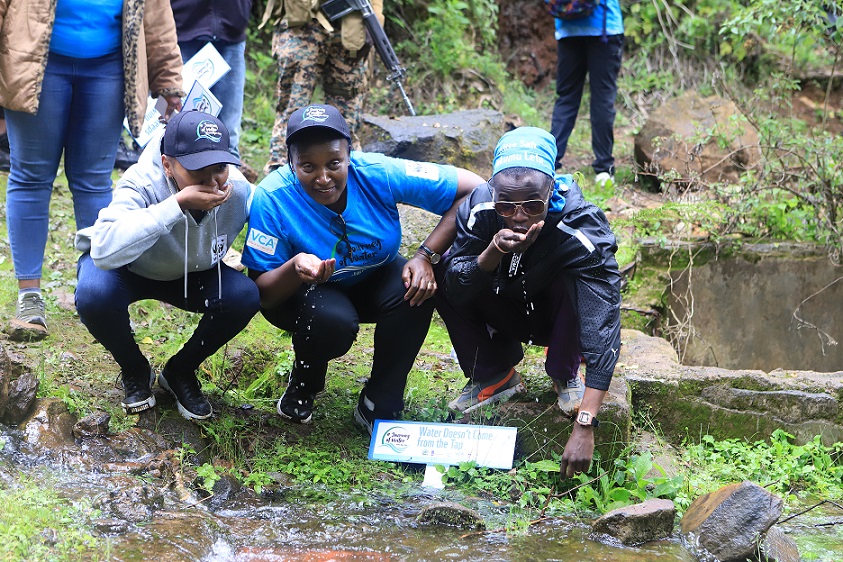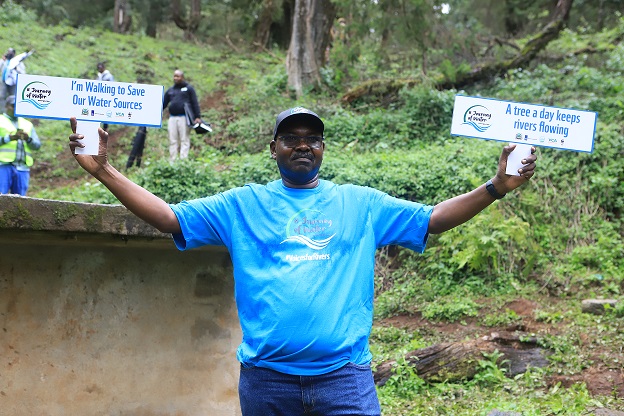
By OMBOKI MONAYO omboki2725@gmail.com
Kenya should urgently implement an integrated water resource management (IWRM) structure to avoid sliding into a supply crisis by 2030, an expert has advised.
According to Egerton University’s soil and water engineering expert Prof Japheth Onyando, IWRM incorporates aspects of integration, social and natural systems, water quality and coordination with other natural resources, including land, atmosphere and biosphere.
“IWRM must always prioritise water use via a holistic and cross-cutting approach. This means efficiently managing water in totality and not just focusing on potable water,” he adds.
Prof Onyando spoke in Machakos, Kenya during the recent Voices for Just Climate Action (VCA) media training session for science journalists and editors affiliated to the Media for Environment, Science, Health and Agriculture (MESHA). The training was organised by World Wildlife Fund for Nature Kenya (WWFK).
“Even when Kenya experiences heavy rains, sometimes causing flooding and destruction of residences in Kisumu County’s Kano and South Mugirango in Kisii, reliable safe water supply remains a mirage, said Prof Onyando.
According to Kenya Water and Sanitation Civil Society Network (KEWASNET) CEO Malesi Shivaji, the country has a water supply shortfall of at least 600 cubic metres per capita.
“Kenya is least endowed in water supply terms, with a 400 cubic meters per capita availability, against the UN recommended 1,000,” said Mr Shivaji.
Prof Onyando said Kenya’s water supply status was first estimated along with the country’s population during construction of the Uganda Railway in 1896. “Kenya’s endowment at the time was 20 billion cubic meters, which works out to 8,000 cubic metres per capita,” the scientist said.
Population growth has seen this endowment level significantly reduce. “According to globally accepted standards, any endowment less than 1,000 cubic meters is classified as water stress. Kenya is currently classified as a chronic water stressed country, with an endowment of approximately 490 cubic metres per capita,” he said.
He added that the situation was projected to worsen with time. “By 2030, the country’s endowment will be at 393 cubic metres per capita, and by 2050 just 293 cubic metres per capita,” Prof Onyando said, adding that Kenya’s demand ratio will increase and surpass availability. “There will be a big difference between what we have versus we need,” he said.

Data from the professor’s study on national water supply indicate that Nairobi County, currently home to at least 5.2 million residents, will not fare any better in the projected endowment levels.
A report by the Institute for Economics and Peace published in October 2022 showed that Nairobi is the second fastest growing city in the world with a potential to become a megacity and home to an estimated 10.4 million people by 2050.
The city, which gets the bulk of its water supply from Athi River catchment area, will be at a demand ratio of 80 per cent by 2030 and drop to 70 per cent by 2050.
Management bottlenecks were identified as major obstacles to seamless administration of the country’s water resources.
Mr Shivaji said the country’s water sector suffers from a bloated management structure, with some 18 statutory bodies mandated to carry out different functions. This, he said, has led to uncoordinated administration of its affairs.
“The bloated structure has given rise to several inefficiencies, including duplication of some functions and contradictory terms of reference,” the scientist said.
Prof Onyando said many Kenyans suffer from “water blindness” and related wasteful use of the resource. “This comes from the mistaken notion that there is plenty of water all around us, yet we are currently classified as a water stressed nation,” he said and encouraged harvesting of rainwater in the city and beyond.
“As a country, we should manage water catchment areas to have more groundwater and surface water stored using dams. Water harvesting should not be dismissed as a poor person’s pastime but be universally embraced to significantly reduce shortages during the dry seasons,” said Prof Onyando.
Kenya has pledged to restore 5.1 million hectares of forests by 2030. This will absorb an estimated 0.48 Gigatonnnes or 480 million metric tonnes of carbon dioxide.
Prof Onyando added: “We can stop the downward trend by protecting our water catchment areas to store more water, reducing the soil loss from construction activities from 600 tonnes of soil per hectare per year to 11 tonnes per hectare and boosting the national forest cover from 7.4 per cent to the UN recommended 10 per cent.”








